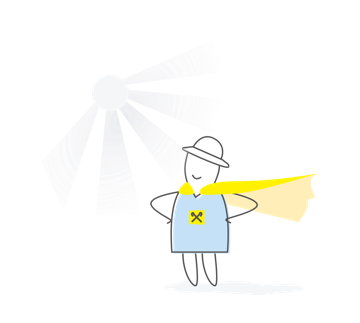KVEDs Intricacy
Not everybody knows that when registering KVED you may even specify 20 types of activities. The legislation does not stipulate maximum amount, but the application form contains only 20 slots, and the note says that in case that these slots are not enough, you can fill in an additional page and specify the necessary codes there. However, such opportunity is rarely used, not many people register more than five types of activities. The first type in the application is considered as the main type of activities.
Of course, the entrepreneurs at the beginning of their business not always know all needed types of activities. Therefore, later there is a possibility to change the registration data by filing an application to the state registration authority.
Entrepreneurs who apply a simplified taxation system should pay special attention to the choice of activities types. After all, KVEDs will be specified not only in the registration card of the entrepreneur, but also in the Register of single tax payers.
Remember that unlike the registration application, in the application for the single tax not only digital KVED codes, but also the titles are specified. For example, KVED code 69.20 is “Accounting and audit activities”. However, single tax payers are allowed to provide accounting services, but audit services are prohibited. Therefore, to be included to the Register of single tax payers, specify KVED code 69.20 in the application to the tax office, and in the name specify only that part of the activities that is allowed – “Accounting activities”.
If an entrepreneur decides to expand the scope of its activities, it is important to add the necessary KVED code to both the state registration authority and the Register of single tax payers in time. At the same time, the legislation does not contain any special restrictions on the combination of activities, as the entrepreneur does not plan to perform all types of work (services) independently. If the entrepreneur engages employees for new activities, there are no problems at all. For example, an individual entrepreneur provides accounting services and decides to open a retail outlet. It is clear that in this case, he cannot do this without a place of business and employees. It has to not only add the KVED code, but also to carry out all necessary work on its opening (to inform the tax office about the place of business, to equip a store, to buy (rent premises and equipment), to conclude agreements for the supply of goods, etc.).
Some individual entrepreneurs believe that it is not always necessary to have employees when you carry on several types of business. You can agree with this, but not always. For example, if an individual entrepreneur is seriously engaged in some type of business – devotes all his time to it, it is not easy to combine. If he provides the services, in which customers are interested at the current stage, then it’s quite possible. For example, individual entrepreneur has specified KVED codes of the design services, real estate leasing out, consulting on commercial activities. In this case, the individual entrepreneur can handle it himself, if customers appear from time to time. Each of the activities can bring income. If the amount of income in general is high, the supervisory authorities will begin probe into how the entrepreneur can really do all this work himself. At the same time, it’s important to remember that the entrepreneur does not necessarily carry out all activities listed in the Register of single tax payers. Even if 5 or 10 types of activities are specified, one or two are carried out on the permanent basis, and others can be in plans, in development or for individual contracts. For example, an individual entrepreneur has retail sales of building materials, but it must also have wholesale if a legal entity comes for its goods.
In conclusion, we note that an individual entrepreneur can have any number of KVED codes in the Register of single tax payers. Their presence does not mean that it carries out all these types of activities. If there is no specific code for your type of activities, then indicate a few similar ones, so that the tax authorities don’t consider that the income is derived from the type of activities undefined in the Register.
Incorrect specification of the code and name of the type of activities may be interpreted by employees of tax authorities as income from an unspecified type of activities in the Register of the single tax payers. And this can lead to the loss of the right to use a simplified system. And the single tax payers of the first and second groups will have to pay a single tax on such income at a rate of 15%. The increased rate of the single tax does not apply to the income of the single tax payer of the third group, received from activities not registered, but not prohibited for work under a simplified system. But this does not mean that the correct KVED code is not important for such entrepreneurs.
An entrepreneur has the right to exclude specified activities and add new ones as many times as he needs. This can be done at any time, the main thing is that the income is received from a new type of activity after it is included in the Register of single tax payers.
Current legislation does not require income accounting for each type separately. Income is displayed as the total amount. The main thing is that in the absence of employees, an entrepreneur could really independently carry on out the activities specified in its documents.
For example, an entrepreneur provides services under KVED code 70.22 “Business consulting” and code 49.41 “Road freight transport”. If the first one does not raise questions, then the second, which is related to freight transport and the individual entrepreneur has several trucks, carries the risk of attracting the attention of the tax office, because the entrepreneur cannot carry out such activities without employees.
So choose the KVED codes correctly and do not be afraid of a large number of them, if your accounting is all right.















